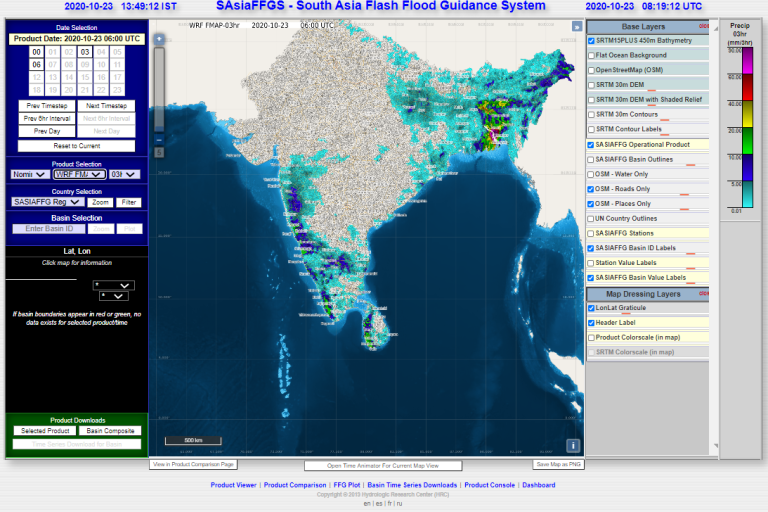South Asia Flash Flood Guidance System Launched
The South Asia Flash Flood Guidance System (South Asia FFGS) has been officially launched, ushering in the prospect of improved early warnings for a major natural hazard in one of the world’s most populated regions.
Operated by the India Meteorological Department (IMD), the South Asia FFGS is now providing the nation’s nearly 1.6 billion people with effective flash flood guidance and forecasts. IMD acts as the regional centre covering Bhutan, Bangladesh, India, Nepal and Sri Lanka, providing forecast products, data and training
The South Asia FFGS is funded by the United States Agency for International Development/Bureau for Humanitarian Assistance (USAID/BHA) and implemented by the World Meteorological Organization and the Hydrologic Research Center (HRC), while National Oceanic and Atmospheric Administration (NOAA) is a satellite data provider into the System.
It is part of a global FFGS which currently provides early warnings to three billion people – 40% of the world’s population – across more than 60 countries.
In an inaugural address at the high-level launch, Dr. M. Rajeevan, Secretary, Ministry of Earth Sciences, emphasized the need for enhancing the observational network for rainfall and soil moisture to improve the performance of the system.
An automated mode of dissemination is to be established with the stakeholders along with the use of social media, so that the information reaches disaster management authorities in a timely manner. Regional and International coordination must be strengthened for exchange of data, expertise, development and sustaining the services, he said.
Dr. M. Mohapatra, Director-General of IMD and Permanent Representative of India with WMO, welcomed the collaborative work done in capacity building for forecasting hydro-meteorological hazards.
He said that the Guidance for flash floods in the form of Threats (6 hours in advance) and Risks (24 hours in advance) will be provided by the Regional Centre to NMHSs and State Disaster Management Authorities and other stakeholders. This will enable all member countries to issue impact-based forecasting, at watershed and also city level, of flash floods which are very sudden and of short duration. In turn, this will help reduce the loss of life and property.
“Flash floods and riverine floods cause major loss of life and property in South Asia during the monsoon season. Due to the frequency of extreme precipitation, urbanization, land-use changes, the need for early warning systems becomes more important,” said Dr. Hwirin Kim, Head of WMO Hydrological and Water Resources Services Division.
“We appreciate the IMD’s strong leadership and support for the South Asia FFGS project for the mitigation of impacts of flash flooding in India and in the South Asia region. We are looking forward to working together for improving FFGS accuracy and the capacity of member countries.,” she said.
Since September 2020, the IMD has started issuing regional flash flood advisories to the Member countries (Bangladesh, Bhutan, India, Nepal and Sri Lanka) alerting NMHSs and stakeholders on possible flash flood risks and associated heavy rainfall and/or snowmelt daily with the lead time up to 36 hours. Moreover, IMD conducted an online training from 8 to 10 July 2020 for 130 forecasters from Bhutan, Bangladesh, India, Nepal and Sri Lanka.
- WMO Member:
- Bhutan ,
- Bangladesh ,
- India ,
- Nepal ,
- Sri Lanka ,
- United States of America










